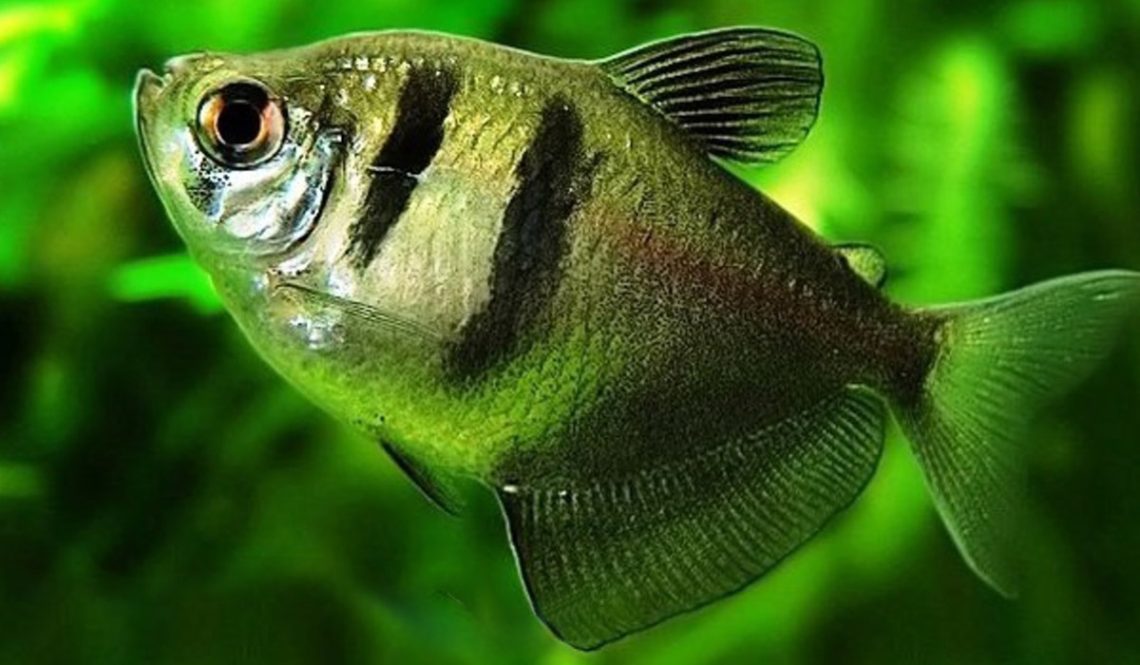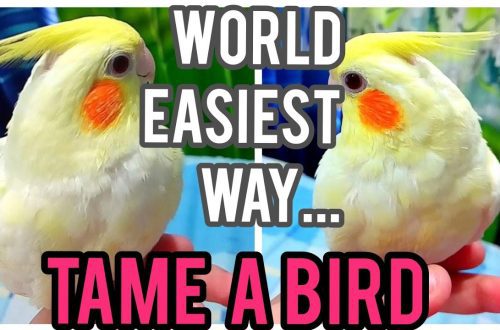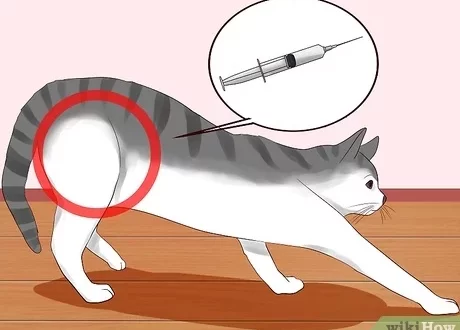
Ternetia fish: maintenance, compatibility, diseases, reproduction
Ternetia fish is an excellent aquarium fish that is suitable even for beginners. And no wonder: it looks quite interesting, hardy, quite peaceful. Therefore, even despite how long these pets live – on average, 3-4 years – many people want to get them. We invite you to learn more about them.
Contents
Ternetia fish: what it looks like
These the fish are quite small – on average, their length is in the range of 4-6 cm. The compact body is somewhat flattened, shaped like a rhombus. fin there are two on the back – the dorsal is pointed, and the tail is quite small. The fins are translucent. Anal the fin is the largest, and it resembles skirt, which is why these fish were named “fish in skirts.” Often available cross bars, one of which crosses the eyes, the second is located behind the gills, and the third comes from the dorsal fin.
That as for color, it is diverse, what is reflected in the classification thorns:
- Thornsia common fish – This fish looks quite neutral. Its color is gray with a silvery sheen, and the stripes are black. Fins are short but, so to speak, magnificent. It is in such the form of thorns can most often be found in its natural conditions – pools rivers of South America. It should be noted that she mimics beautifully in this form under the surrounding reality when the shadow of the trees falls on the water, these fish are almost invisible.
- Veil – similar in key points to classic thorns. The only thing noticeable difference – elongated fins and a tail that resembles a veil. But this beauty is very fragile, so would like to show a little more attention, choosing neighbors and decor aquarium.
- Albino – this fish is also called “snowflake”. As you might guess, this fish is completely white – some dark pigment and, in in particular, the stripes on it are completely missing. Of course red eyes just like other albinos, thorns in this case are not uncommon.
- Azure thorns – many confuse it with an albino, however, this species is characterized bluish tone. This can be seen for example, in oceanic herring. This blue tone sometimes casts metallic glitter.
- Caramel – kind of, it’s a kind albino, but only with undertones. Undertone such a fish is pinkish, due to which she looks like candy. So how this species was artificially bred way, he’s more vulnerable than the rest thorns.
- Glofish – a real decoration of any aquarium, from which it is impossible to take your eyes off. This is another artificial species characterized by bright coloring. Unlike caramel, this fluorescent fish. Achieved similar effect due to experts introduce such fish fragments from DNA coelenterates. The most interesting thing is that impressive color not only does not disappear in fish with age, but is also able to transmit them offspring! And all thanks to the fact that color is laid down at the DNA level. A small secret of the content of such fish: you need to turn on next to them more often ultraviolet radiation. Exactly then they look great effectively.
The content of the ternation: let’s talk about subtleties
That need to know about the content of such beauties?
- Ternetia The fish are small but very active. Therefore, when starting them, it is worth preparing an aquarium that will accommodate though would be 60 liters of water. This volume is for flock. In general, the more spacious aquarium, the more satisfied they will be fish. And you need to remember to buy a cover, since thorns are often, frolicking, jump out of the water, which is sometimes fraught.
- Temperature water must be within 22 to 28 degrees. Especially warm water should be made for fish GloFish. The most interesting that cooler water thorns are still able to endure, but become more lethargic. Acidity is best set within from 6,5 to 8,5, and hardness – from 5 to 20. You don’t need to add water at all. As for the movement of water, the current should be either weak or, at the extreme case, just moderate. Filtration and aeration should be good. Change water is needed daily in the amount one quarter. The new water must be settled and with the parameters set for the rest of the water in the aquarium.
- That touches the ground, then the thorns are indifferent to him, as they prefer medium and upper layers of water. Only, preferably dark. The soil must be siphoned once a week, to keep the water clean to the joy of thorns.
- Thick thickets of thorns are very fond of – in the waters South America they are always present. But these fish also love to swim. What what to do? resort to golden middle” – leave a large area for free swimming, but at the same time plant some areas with water plants, creating thicker thickets.
- Decor thorns are very fond of. However, it is necessary make sure that fish with long fins – veiled, for example – not swam surrounded by decor with sharp edges. Otherwise, all their beauty will be double damaged.
- К the light of thorns is more demanding – they need subdued lighting. Yet again, for the shaded waters of South America it `s naturally. Therefore sunny light is best kept to a minimum, and at night It’s best to turn off the lights altogether. AT the rest of the time artificial lighting should be muted.
- That As for the diet, then thorns are to omnivorous fish – both vegetable and They like protein food. Preferred true, ready-made flakes for fish, since they are light, and thorns, as we already wrote, prefer to be in the middle and upper layers of water. Digging in the ground searching for food is not to their liking. In addition, the flakes are balanced in terms of maximum. It is necessary to regale thorns twice a day, issuing at a time such portions that fish can swallow in one sitting. Otherwise, the water will spoil. It should also be noted that ternations prone to obesity, so twice a week they are recommended to arrange fasting days during which The fish won’t eat at all.
Compatibility of ternation with other aquarium inhabitants
Ternetia known for their good-natured disposition, however, choosing neighbors for them, definitely worth considering some recommendations:
- Better just contain thorns next to relatives – that is, a flock. flock should include at least 8-10 individuals. AT In this case, these fish are the most peace-loving – continuous appeasement! They are all about communicating with each other. with a friend and completely ignored neighbors. If you take one or two fish, those completely unexpected for the owner may become aggressive towards other inhabitants of the water world. Except togo, for staykoi ternetsium boundless interesting to watch – each fish you can discover your character, they become very smart and resourceful. И qualities such as aquarists noticed, just in a flock!
- However, the despite peacefulness, to individuals with veil-finned thorns are better don’t plant. The heroes of this article are not aggressive, but they are used to biting all sorts of plants, and long fins, despite the fact that sometimes they have exactly the same fins, they are attracted as an object for bitten
- В the same time and other fish can encroach on the lush “skirts” of thorns. In this case, such “tweezers” are worth keep away.
- Slow floating fish is better not to plant them. Nimble thorns, loving besides tasty food, so fast will pick up pieces of food sedate neighbors risk staying no meal at all. And this will be happen regularly!
- А here are peaceful sedate fish – ideal neighbors for South American beauties. It’s about for example, about catfish, scalars, guars, swordtails, zebrafish, mollies, corridors.
- That concerns plants, it is preferable those who perfectly tolerate muffled lighting. These can be, for example, anubias, limnophiles, pinnates, mosses, ferns, cryptocorynes.
Reproduction of thorns: what need to know
Now Let’s talk about what you need to know when planning to breed thorns:
- For first you need to learn to distinguish between males from females. In females, the body is more massive, wide, their tummy is denser. And males, in addition to compactness, differ narrower and longer fins.
- When thorns ready to breed? How usually when they turn 6 months. And even better – 8. In the last case, we can definitely say that The fish are ready to give birth.
- About 10 days before spawning of males preferably weaned from females. It is preferable to feed them at this time. protein food that has passed pre-freeze.
- Has arrived the turn to put the fish in the spawning ground. it should have a separate aquarium at least 30 liters. Soft water is needed there, warm and sour. Water hardness – lower indicator 15, temperature – from 27 to 30 degrees. It is advisable to plant such aquarium with many plants, for which are characterized by small leaves. Down is best put Javanese moss.
- Then females sit with males. For one girl is better to choose 2-3 boys. Female able to postpone at one time approximately 500 eggs. This usually happens in within 2-3 hours. At this time the males actively swim after her to fertilize eggs.
- Как fertilization just happened adult fish should be removed immediately – with a special parental instinct they they do not differ. larvae should be expected in 18-36 hours. For that time the host must remove all white eggs – they are dead, and only pollute the water.
- Fry will start to swim after a few more days. And in the early days they are highly desirable feed infusoria. A little later you can include Artemia nauplii in the diet and microworms. The main problem is that the fry in a dark tank often cannot find food. That’s why, while the wards are small, you can give them more light – then they will find everything during.
Diseases of thorns: with what may face
С what ailments do thorns face? They are generally quite healthy. fish. But of course not immune from various troubles. About addiction to obesity we mentioned earlier, but There are other issues that may arise.
Reversible attention to symptoms:
- collapses on its side or even swims sideways – such may happen due to some damage. If this is not the case, then pet oodinosis – parasitic disease. It occurs when hosts are not supervising enough for the purity of water, soil, decor. For the beginning of the victims need to be resettled from other inhabitants of the aquarium. But treatment is recommended for every everyone’s case. To do this, you need to measure from 750 to 1 units of bicillin for each 100 liters of water. Accordingly, if the aquarium less, and the dosage should be less. In a day, the parasites should die, however, after 3-5 days it is recommended repeat treatment.
- Fish floats upside down – usually like this sign indicates that the fish oxygen starvation. So it’s worth improve aeration. The aquarium can also be overpopulated, it may develop unhealthy atmosphere. In recent cases of its inhabitants is necessary seat.
- Fish floats upside down – the reason may hide in bacteria. In this case the sick individual must be transplanted. To her adding water from the aquarium half of the volume should be fresh water. Feed the patient for a couple of days does not stand at all, but instead in the water you need to dissolve the medicine against bacteria. After a few days you need water replace by adding this again a drug.
- Growth on the lip – may be a tumor. His not worth touching at all, as cutting or cauterize the house still will not work. But it may also happen that he – consequence of fungal infection. In such case of a sick person, they put him off, and appoint him an antifungal drug. pour a solution with such a drug is necessary several times for about 3 days. Then the water changes completely – if the treatment passed successfully, the growth comes off.
- Growth on the head – just the same it can be the result of fungus. What if the fish is otherwise healthy and active, then, oddly enough, such an outgrowth can serve as a signal that the aquarium overpopulated.
- Gills blush – most likely, this is a signal the fact that something is wrong with the quality of the water so. By purchasing a tester, the owner can test water for ammonia and nitrates. Incidentally, Usually the issue is in ammonia. А maybe the water needs to be changed more often or better oxygenated.
- Feces form a thin thread – this is hexamitosis. The patient should be placed in a separate capacity, and raise the temperature there water. Approximately 33-35 degrees is perfect. Parasites are here or they die.
- On the fins form white dots – this is the so-called “semolina”, which is common infectious disease. To heal a pet, you must saturate water with oxygen even more and increase water temperature by a few degrees. You can also add bicillin to the water, if such measures do not help.
- Eye bulges – the result of an increase levels of phosphates, nitrates, total water pollution. Often similar happens when the aquarium is overcrowded. In this case, you need to check water indicators and replace it. Also it is necessary to resettle the inhabitants of the water world, if there are too many.
Aquarium with thorns resembles a miniature little world with fancy lanterns. it really the real decoration the house they want to get many. We hope that useful recommendations, which readers can learn from our article will help take care of this decoration as efficiently as possible, and admire them for a long time.





